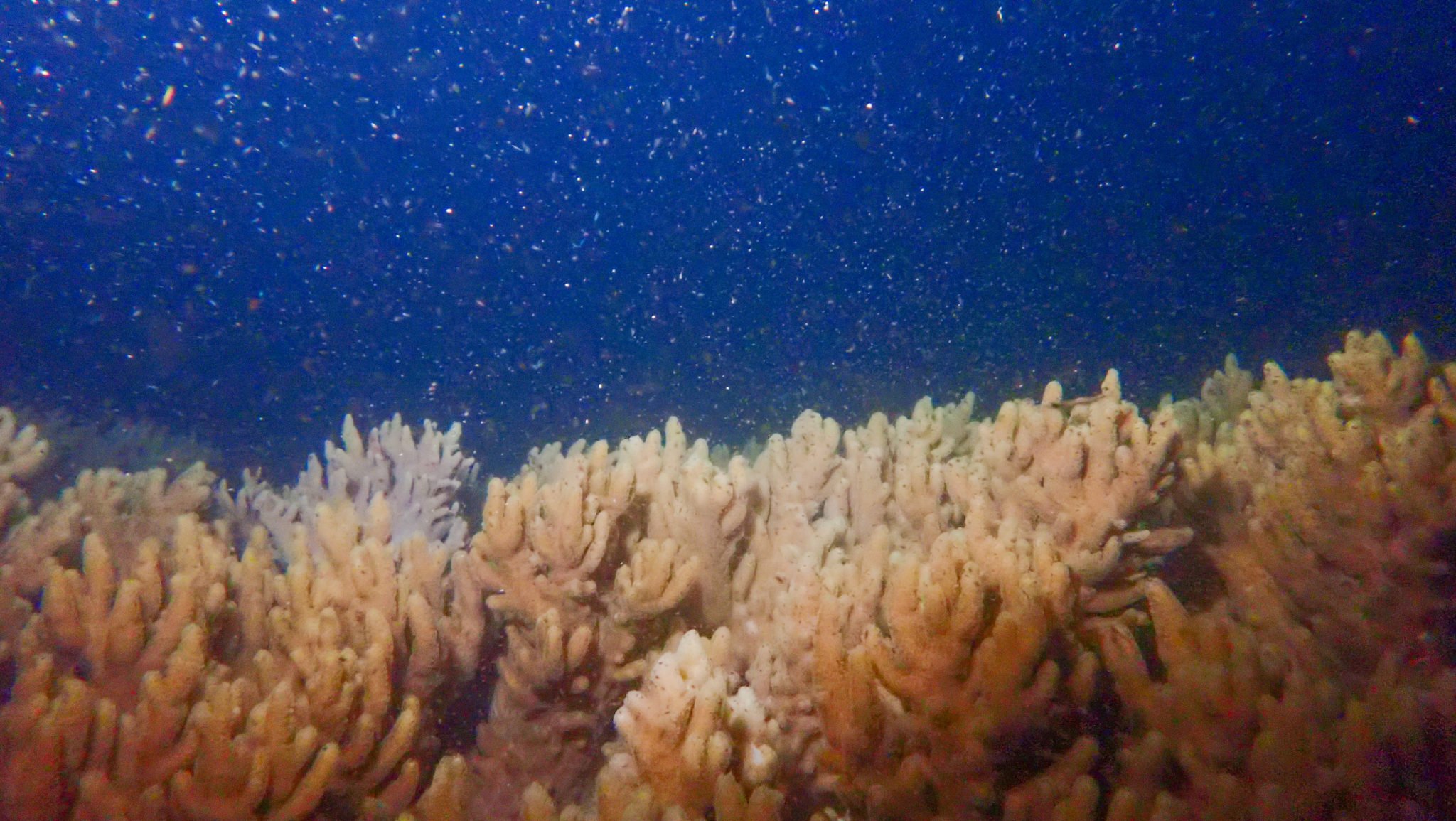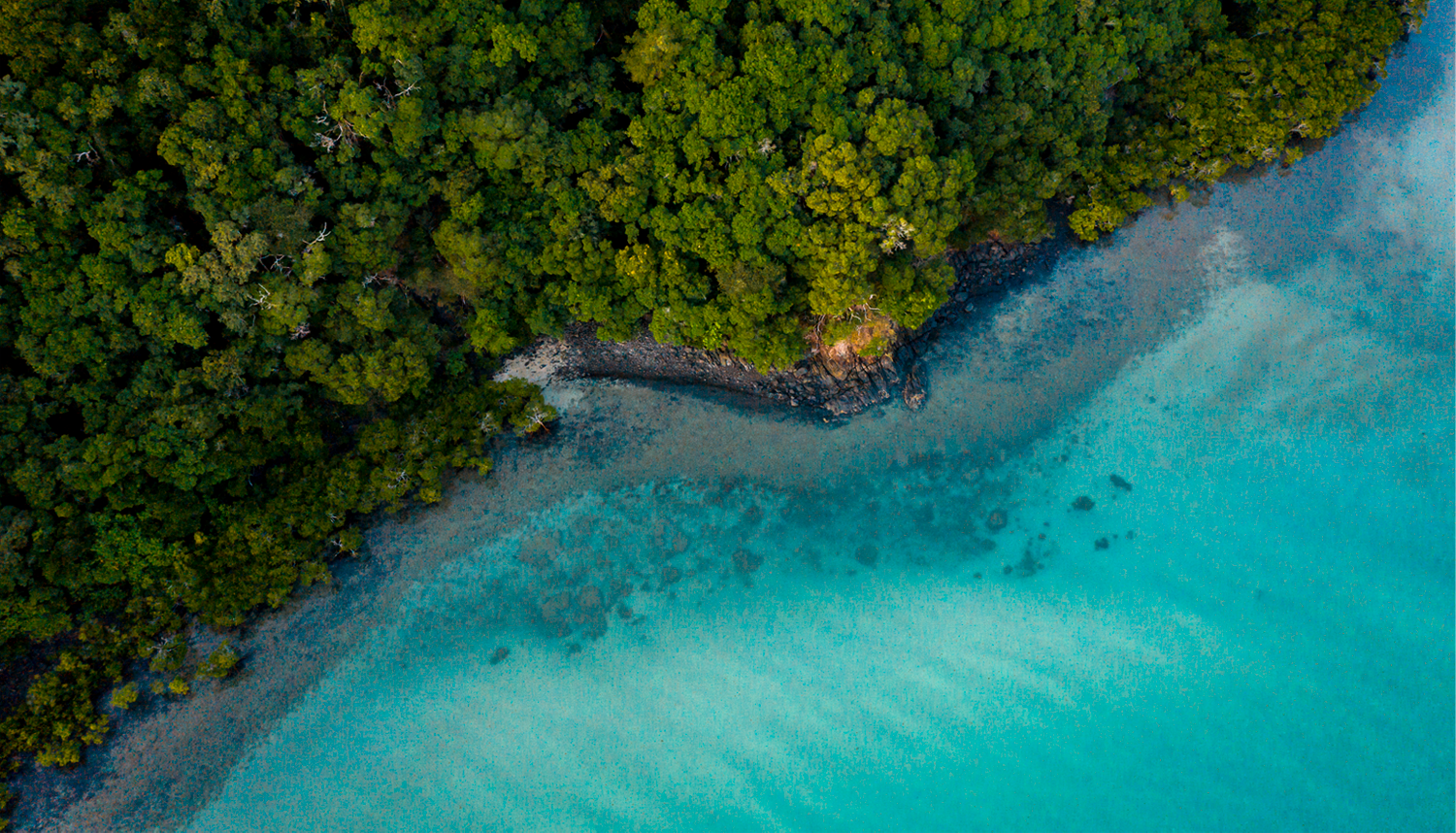Researchers, tourism operators and Traditional Owners are poised to analyse the next generation of corals on the Great Barrier Reef after the start of the annual coral spawn was recorded last night (November 2) on Moore Reef, 47km east of Cairns.
Billions of tiny pink balls exploded into the water as different species of soft corals and a handful of hard corals began the regeneration process, spawning for a few hours during the night. The sex cell bundles break open releasing sperm and eggs to bump into each other as they float on the Coral Sea currents and then settle on coral rubble to form baby corals.
Marine biologist Stuart Ireland has been filming the annual rebirth of the Great Barrier Reef since 1996 and the 2023 event is the tenth time that he has documented it from the Sunlover Reef Cruises pontoon at Moore Reef.
“The coral cover and diversity is very high at Moore Reef after the past six years of strong growth and the 2023 spawning reflects this. As in previous years we watched the soft corals start the spawning process and spent a few hours observing the bundles of sperm and eggs being released,” he said.
“We will dive on Moore Reef again after the sun goes down tonight and expect to see the even more spectacular phenomenon of the hard corals starting the process of regeneration on the Great Barrier Reef.”
Mr Ireland was joined by Cairns-Port Douglas Reef Hub Coordinator Dr Abbi Scott, a researcher at James Cook University’s Centre for Tropical Water and Aquatic Ecosystem Research (TropWATER), who is working with tour operators to understand coral recruitment after the spawning event.
Dr Scott said tiles were deployed across five reefs and the baby corals that grow on them would be analysed next year with the data available for coral larval dispersal models to better understand the connectivity of the reefs where the larvae originated.
“This research will build knowledge of the relative variation in coral recruitment at each reef studied and how it differs for each of those reefs,” she said.
“It will be useful to inform assisted coral recovery initiatives and to help operators manage their high-value tourism sites.”
The Cairns-Port Douglas Reef Hub network is a grassroots community approach to reef health supported by Traditional Owners, scientists, tourism operators and the community who are deeply committed to a healthy and resilient Reef.
Funded by the partnership between the Australian Government’s Reef Trust and the Great Barrier Reef Foundation, it brings together individuals and organisations that want to learn, share and collaborate to pilot new approaches for assisted coral reef recovery, protection and adaptation that deliver benefits for the local reefs and community in the face of climate change.
The coral recruitment study is just one of the many innovative coral rehabilitation and stewardship projects underway in the Cairns and Port Douglas region and has the strong support of the tourism industry. Wavelength Reef Cruises owner and marine biologist John Edmondson helped to develop the recruitment research concept.
Dr Scott said Wavelength was one of five tourism operators involved in the project with tiles placed across five reefs by Down Under Cruise and Dive, Experience Co, Passions of Paradise, Quicksilver Group, Wavelength and not-for-profit organisation Reef Restoration Foundation which manages underwater coral nurseries at Moore Reef.
“Such a regional scale study across a tourism operator network provides invaluable data for the Cairns-Port Douglas region and is a potential model for other tourism hotspots as tourism and research become more entwined,” she said.
“The tiles will be retrieved in February and analysed in the TropWATER laboratory by the Hub network of tourism operators, non-government organisations and Traditional Owners.”
Great Barrier Reef Foundation Managing Director Anna Marsden said: “Right now, the Great Barrier Reef is teeming with new life.”
“The annual coral spawning is not only one of the most extraordinary natural phenomena on the planet, it provides us with an opportunity to fast-track world-leading research to safeguard its future from the impacts of climate change,” she said..
This project is run by the Cairns-Port Douglas Reef Hub and led by local partners Down Under Cruise and Dive, Experience Co, Passions of Paradise, Quicksilver, Reef Restoration Foundation and Wavelength. The Cairns-Port Douglas Reef Hub is funded by the partnership between the Australian Government’s Reef Trust and the Great Barrier Reef Foundation and is coordinated by TropWATER at James Cook University.
What is coral spawning
Coral spawning is the reef having sex. Coral polyps simultaneously release egg and sperm bundles into the ocean for external fertilisation. This happens in an annual mass event earning it the cheeky reputation of being the world’s largest orgasm on the world’s largest organism.
During this time the Great Barrier Reef is transformed into an underwater spectacle resembling the inside of a snow globe. The spawn creates a pink-brown slick on the surface where the sperm will meet a compatible egg and produce a larvae that takes about ten days to fully mature into a coral polyp.
Stories passed down by coastal Indigenous communities acknowledge coral spawning, but western science did not become aware of it until 1982 so researchers are still learning about the phenomenon. Inshore reefs tend to spawn a month ahead of the outer reef where the spawning is more spectacular. It generally occurs on the outer reefs off Cairns and Port Douglas two to six nights after the November full moon when water temperatures are 27-28C.
This year the full moon is at the end of the month in both October and November and may result in a split spawn after both moons. There is little movement of the water between high and low tides in the week following the full moon and these calm conditions help to maximise the fertilisation process. Spawning predominantly occurs at night when the plankton-eating reef fish are sleeping which reduces the risk of the eggs being eaten.
How to see the coral spawning
Tour operators operate night trips for diving and snorkelling when the coral is predicted to spawn. Diver’s Den, Pro Dive Cairns and Tusa offered dedicated coral spawning night trips in November and December 2023. Liveaboards are also out on the Great Barrier Reef during coral spawning. It’s a natural event so seeing the coral spawning is not guaranteed, but you will still spend your evening discovering the sea creatures that emerge after dark.

